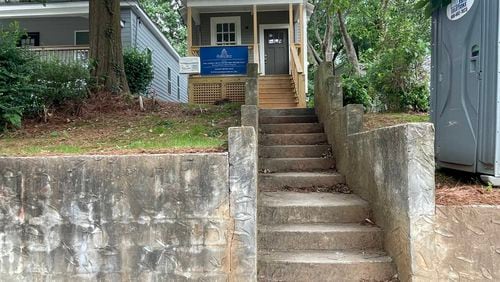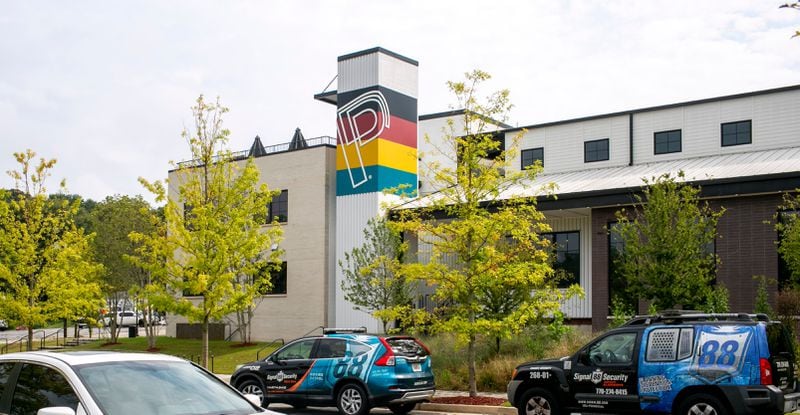While walking on a portion of the southside Beltline, I was approached by a jogger who stopped mid-stride as our paths crossed.
He pointed to the 13-acre expanse of lush grass and new buildings below us that is known as Pittsburgh Yards and asked, “What is this neighborhood?”
I told him, and he ran off without so much as a thank you. My friend and I spent the next 10 minutes debating whether the jogger would prove to be friend or foe to the neighborhood.
Like many other Beltline adjacent neighborhoods in southwest Atlanta, Pittsburgh is seeing renewed interest. Founded in 1883 by formerly enslaved people and named after the northern city with similar levels of smog, Pittsburgh is rapidly changing.
It’s becoming an area where properties that were once affordable, or even well below market value, have been redeveloped and priced far out of the range that most of us can afford. One property is listed at $1.2 million. It comes with a swimming pool, at least.
Ten years ago, the Annie E. Casey Foundation commissioned a plan to preserve the Pittsburgh neighborhood in a way that balanced historic preservation with new development without displacing people. By 2017, it was clear that more intervention was needed to ensure long-term affordable housing in the community.
Credit: Rebecca Wright
Credit: Rebecca Wright
An example of that effort will be unveiled later this week at 785 Coleman Street SW. The one bedroom, one bathroom shotgun cottage — located one mile from the Beltline and Pittsburgh Yards — reflects both historic preservation and sustainable building practices.
The home, rehabilitated through a partnership between Georgia Trust for Historic Preservation and Atlanta Land Trust, is priced at $150,000 and qualified buyers must earn less than 65% of the area median income.
“The rehabilitation of these historic homes helps preserve the history and culture of these historically Black communities while ensuring they remain accessible to families for whom homeownership is out of reach,” Atlanta Land Trust Executive Director Amanda Rhein said in a written statement.
This particular property is the third to be redeveloped and sold through Georgia Trust’s West Atlanta Preservation Initiative and it is the first in Pittsburgh. The others, located in Westside neighborhoods along the Beltline, also will offer permanent affordability in areas that are quickly becoming unaffordable for some Atlanta residents.
The Annie E. Casey Foundation donated the Pittsburgh home to Atlanta Land Trust, which is responsible for maintaining the land and retains ownership of it. That allows a buyer to purchase the home at a reduced price.
The homeowner leases the land and agrees to sell the residence at a restricted rate to another homebuyer in need of affordable housing. The resale formulas used by Atlanta Land Trust allow 25% of the appreciated value to go to the homeowner, or the formulas determine equity value based on the homeowner’s average income growth.
When we think of affordable housing, the image is most often multi-family rental units. Historically, Atlanta neighborhoods have been zoned for single family homes.
A community land trust (CLT) is just one example of a model that offers a pathway to making single family homes more affordable. There are many other Atlanta based companies – public and private – that are working together on these kinds of projects, particularly on the west and south sides of the city where the Atlanta Beltline has spurred redevelopment.
It feels prophetic that the modern version of CLTs evolved in southwest Georgia in 1969. New Communities was developed during the civil rights movement as a collective to help farmers who had been driven from their land. By 1985, the land the organization bought went into foreclosure due to discriminatory lending practices.
Cities across the country – Houston, Buffalo, Tampa – are now implementing large scale CLT efforts. These initiatives require land, funding and partners who are driven by values that prioritize the preservation of communities over maximum profits.
Georgia Trust intends for the three homes it has sold as CLTs to serve as an example to other organizations in the state. The hope is others will use this model to preserve historic homes and increase affordable housing, bringing lessons from Georgia’s past into the present.
Read more on the Real Life blog (www.ajc.com/opinion/real-life-blog/) and find Nedra on Facebook (www.facebook.com/AJCRealLifeColumn) and Twitter (@nrhoneajc) or email her at nedra.rhone@ajc.com.
About the Author








